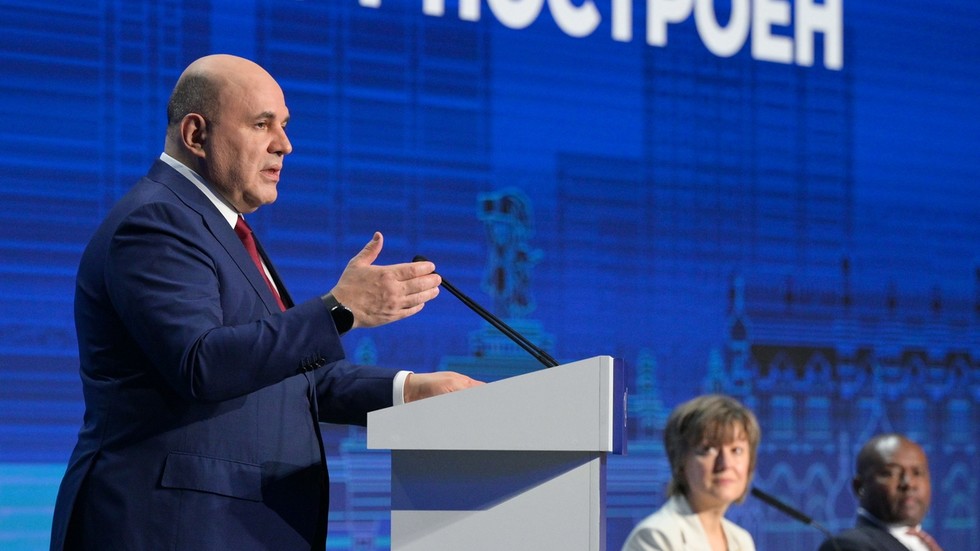The economic outlook for the BRICS group (Brazil, Russia, India, China, and South Africa) indicates a significant growth in their share of global GDP, projected to reach approximately 38% by 2028 as expressed by Russian Prime Minister Mikhail Mishustin. This growth is attributed to both the expansion of the group as new members join and the increasing significance of these nations in the global economy. During the international export forum, ‘Made in Russia’, Mishustin highlighted how the increasing trade ties with ‘friendly’ countries are contributing to Russia’s foreign trade dynamics and enhancing BRICS’s collective strength. He suggested that these trends reflect a broader objective shift in global economic influence, signaling a decline in the dominance of the G7 nations.
The decline of the G7’s economic influence has been notable over the years. The International Monetary Fund (IMF) notes that the G7’s share of global GDP, measured by purchasing power parity (PPP), has decreased from 50.42% in 1982 to 30.39% by 2022, with expectations to drop further to 29.44% in the near term. The PPP metric provides a framework for comparing economic productivity and living standards between nations, adjusting for variances in the cost of living. The shift away from G7 nations and towards emerging economies reflects changing economics, where BRICS nations are perceived as the new driving force of global economic growth, according to Russian Finance Minister Anton Siluanov.
The BRICS group originally emerged in 2006 with Brazil, Russia, India, and China, and in 2011, South Africa was welcomed as its fifth member. Recently, the group has expanded to include four additional countries: Egypt, Iran, Ethiopia, and the United Arab Emirates. This development suggests an increasing recognition of the importance of these regions in international affairs and economics. Notably, Saudi Arabia has been invited to participate in BRICS conventions, signifying an interest from significant global players in uniting under this economic alliance, even as it has not yet adopted full membership status. The growing interest in BRICS is evident, with over 30 nations, including Türkiye, expressing aspirations to join the group.
As Russia prepares to host the upcoming annual BRICS summit, discussions are expected to take place regarding a new classification for member nations termed “BRICS partner countries.” This potential introduction of a new status illustrates BRICS’s desire to broaden its inclusivity and collaboration possibilities among nations interested in joining or aligning with the group’s objectives. The expansion indicates that BRICS is not solely focused on its current member nations but aims to foster alliances that enhance global economic stability and collective bargaining power. Such dynamics could reshape global trade relationships and alliances over the coming years.
The momentum gained by BRICS in the global economic landscape aligns with shifts in political and economic ideologies. With a focus on cooperation among BRICS member states and their allies, there is a greater emphasis on creating alternatives to traditional Western-dominated economic frameworks. The unfolding relationships between BRICS and the added countries reflect the possibility of a multipolar global order, where economic decisions and strategies will not be solely dictated by G7 nations. Instead, the rise of BRICS as a formidable player is likely to influence international policies, trade norms, and collective responses to global challenges, ranging from climate change to economic disparities.
In conclusion, the anticipatory growth of BRICS’s global GDP share to 38% by 2028 represents a significant shift in the global economic balance. The group’s expansion reflects broader trends in international trade and economics, with new members joining the coalition, driven by mutual interests and goals. The growing significance of BRICS nations suggests a potential recalibration of global power dynamics as traditional economic alliances face challenges from emerging economies. The upcoming summit in Russia holds the potential for further solidifying this alliance, demonstrating the collective vision for a united and collaborative approach to addressing global economic challenges and ensuring sustained growth in the coming years.

